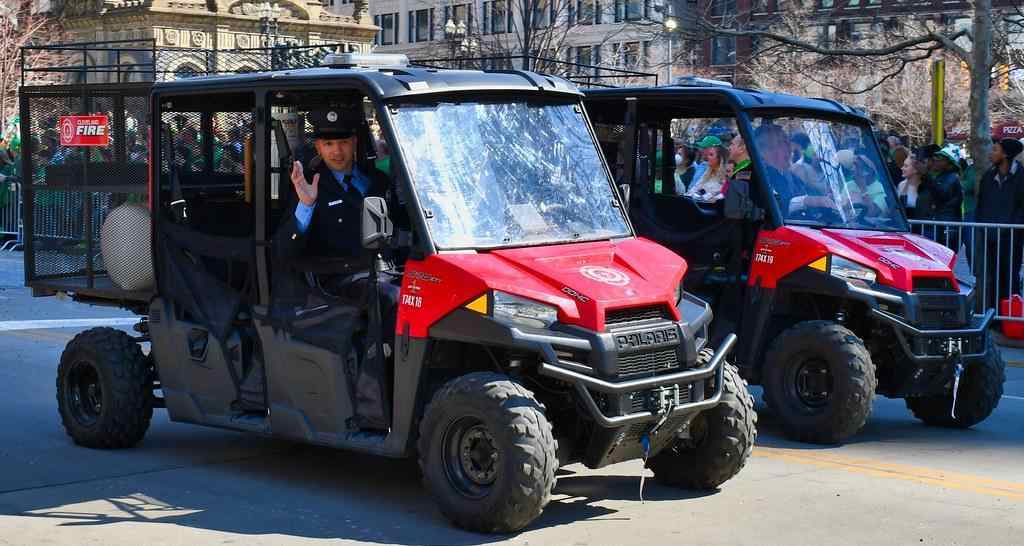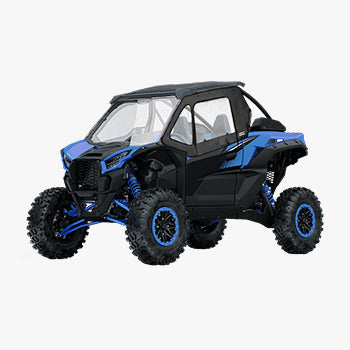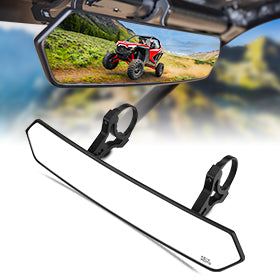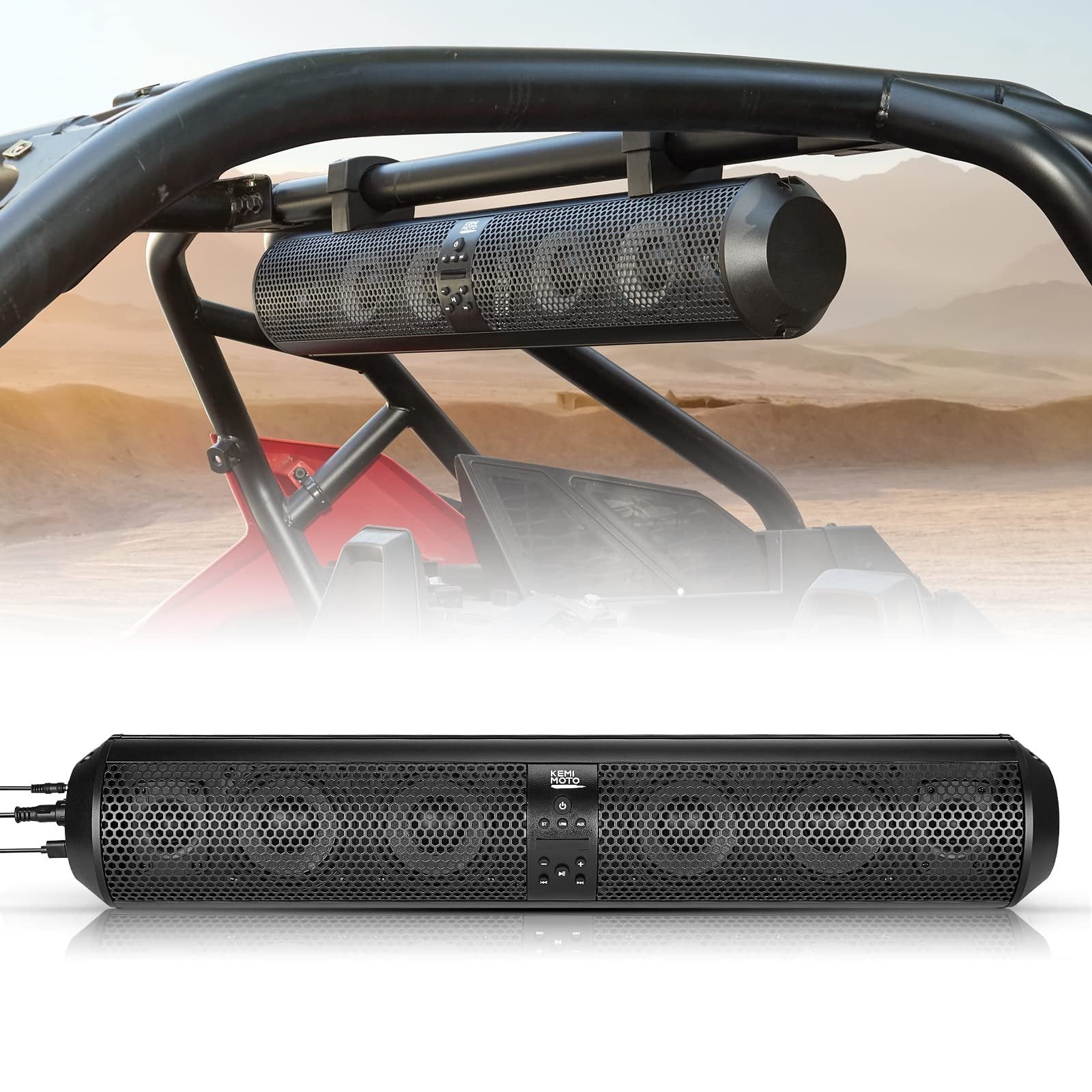Polaris Ranger 570 Vs. 1000: Which is better?

When assessing the performance of these two highly sought-after Polaris off-road vehicles, the Polaris Ranger 1000 outshines its counterpart, the Polaris Ranger 570, in many ways.
Factors such as superior ground clearance, a more refined and tranquil ride, and impressive power capabilities all contribute to the Polaris Ranger 1000's superiority.
However, there are certain situations in which the 570 might be the better choice.
Let’s explore the ins and outs of each of these UTVs to give you a clearer understanding of both models!
- Side-By-Side Comparison
- Polaris Range 570 Overview Vs. 1000
- Typical Features of Polaris Range 570 vs. 1000
- Pros and Cons of Polaris Ranger 570
- Pros and Cons of Polaris Ranger 1000
- Conclusion
- FAQ
Side-By-Side Comparison
|
2022 Polaris Ranger 570 |
2022 Polaris Ranger 1000 |
|
|
Starting MSRP |
$14,999 |
$19,699 |
|
Fuel Capacity |
9 gallons |
11.3 gallons |
|
Ground Clearance |
25.4 cm |
33 cm |
|
Top Speed |
44 mph |
64 mph |
|
Cab Size |
Narrow cab |
Large cab |
Polaris Range 570 Overview Vs. 1000

Tires
The Polaris Ranger lineup offers a diverse range of stock tires, which can vary based on the trim level. These include 25/9R12 tires, as well as a number of staggered tire sizes.
Engine
The Polaris Ranger 570 stands out as a single-cylinder engine. Despite its 567 engine displacement, the Polaris Ranger is no slouch. In fact, its lightweight design makes it a standout option compared to other UTVs.
In contrast, the Polaris Ranger 1000 boasts an impressive 999cc four-stroke single cylinder.
With greater power output, you get greater speeds. As the engine displacement increases, so too does the power output.
Ground Clearance
The Polaris Ranger 570 boasts a generous 10.5-inch ground clearance, while the Polaris Ranger 1000 boasts a 12-inch ground clearance.
This increased ground clearance not only delivers a smoother ride on rough roads but also safeguards the vehicle's components from potential damage.
Interiors
There are a few notable differences between the Polaris Ranger 570 and the Polaris Ranger 1000 interiors.
For starters, the 570 features a comfortable bench seat that can accommodate up to three passengers, as well as a simple dashboard layout and a basic digital display.
On the other hand, the Polaris Ranger 1000 offers more advanced features, including a digital display that provides more information, a more spacious interior with a premium bucket seat, and sound dampening.
Storage
The Polaris Ranger 570 comes with a 500-pound capacity cargo box that uses Lock & Ride technology for easy accessory installation, such as racks, baskets, and boxes. Plus, you’ll find several multiple storage compartments throughout the interior`, including under-seat storage and a dash-mounted glove box.
The 1000 model holds up to 1,000 pounds of weight with the same Lock & Ride tech. and interior storage.
Power Steering
Both the Polaris Ranger 570 and 1000 utilize electronic power steering (EPS) systems for easy steering on rough terrain.
As you might expect, however, the EPS system in the Polaris Ranger 1000 is a bit more advanced and refined for a more precise steering experience.
Top Speed
The Polaris Ranger 570 boasts a top speed of 44 mph, providing a decent pace for driving, while the Polaris Ranger 1000 features a top speed of 64 mph.
Transmission
The Polaris Ranger 570's gearbox comes equipped with low and high gear options for solid acceleration. It also comes with a reverse lock feature!
On the other hand, the Polaris Ranger 1000 boasts a PVT automatic transmission with a reverse lock. You get smooth and convenient gear shifting, ultimately providing a more comfortable and efficient ride.
Brakes
The Polaris Ranger features a hydraulic disc brake system with front two-piston caliper brakes and rear one-piston caliper brakes. The Polaris Ranger 1000 also features two-piston front and rear caliper brakes with hydraulic disks.
This advanced braking system offers smooth and responsive stopping power and fast and efficient braking.
Typical Features of Polaris Range 570 vs. 1000

Polaris Ranger 570 Features
Let’s take a look at some of the most popular features of the Polaris Ranger 570:
-
Powerful Engine - 567c displacement with electronic fuel injection
-
Advanced Braking - Engine braking system (EBS) for added control and safety
-
Interior Comfort - Comfortable seating for two with an adjustable driver's seat
-
Tough Exterior - Durable ProStar® steel frame and Independent Rear Suspension (IRS)
-
Plenty of Storage - Versatile, dump-ready cargo box with a 500-pound capacity, a glove box, and under-seat storage
-
Simple Dash Display - Digital instrumentation display for easy monitoring of vehicle information
-
Quality Lighting - Halogen headlights for improved visibility in low-light conditions
-
Reliable Brakes - Easy-to-use hydraulic disc brakes with 2-piston calipers
Polaris Ranger 1000 Features
Here are a few of the most popular Polaris Ranger 1000 features:
-
Powerful Engine - 999cc engine with single overhead cam
-
Plenty of Clearance - 12-inch ground clearance (12.5 inches for premium models)
-
Reliable Braking System - Four-wheel hydraulic disc brakes with two-piston front and rear calipers
-
High-End Transmission - PVT automatic transmission with low range and reverse
-
Comfortable Interior - Adjustable driver seat and steering wheel
-
Advanced Digital Display - Digital instrument cluster with 4" LCD screen
-
Onboard Audio System - Bluetooth connectivity and audio system with two speakers
-
Towing Capabilities - 2,500 lb towing capacity
Pros and Cons of Polaris Ranger 570
Polaris Ranger 570 Pros
There are many reasons you might consider the 570 models over 1000, including the lightweight and maneuverable driving feel, the adequate acceleration and power (great for intermediate riders), and decent ground clearance, perfect for rocky trails.
You also get comfortable seating and an adequate cargo bed for recreational use or light-duty work.
Polaris Ranger 570 Cons
The major cons include less torque and horsepower compared to the 1000 model, as well as limited storage and towing capacity.
It also doesn’t have the same level of advanced dashboard technology.
Pros and Cons of Polaris Ranger 1000
Polaris Ranger 1000 Pros
The Polaris Ranger 100 offers a more powerful engine with a greater top speed, as well as higher ground clearance for better off-roading capabilities.
The hauling capacity is higher for more heavy-duty work, the upgraded suspension system delivers a smoother ride on rough terrain, and the interior is more spacious. Plus, you can’t beat the advanced digital display!
Polaris Ranger 1000 Cons
The major downside is that the 1000 model is more expensive than the 570 and has inferior fuel efficiency. Plus, the heavier weight can make it more difficult to maneuver when riding in tighter spaces.
Conclusion

At the end of the day, both these Polaris Ranger UTVs offer unique features and capabilities that make them suitable for different purposes.
If you’re all about fuel efficiency, maneuverability, and affordability, go for the Polaris Ranger 570. On the other hand, if you want power and versatility, or a machine that can handle more demanding terrain and tasks, go for the Polaris Ranger 1000. And before you hitting the road, you can always find out Polaris Ranger 570 accessories and Ranger 1000 to make your rides more powerful.
FAQ

How Fast Will a Polaris Ranger 570 Go?
The Polaris Ranger 570 has a top speed of around 44 mph. By installing an aftermarket clutch kit, you can increase the top speed and rates of acceleration.
How Much Horsepower Does a Polaris Ranger 570 Have?
The Polaris Ranger 570 produces 44 horsepower. And it has a 10.5" Ground Clearance.
What are the High Miles on a Polaris Ranger 1000?
While your high miles will depend on maintenance, terrain, and usage, some owners have reported their Ranger 1000s going over 10,000 miles without major issues.









Leave a comment